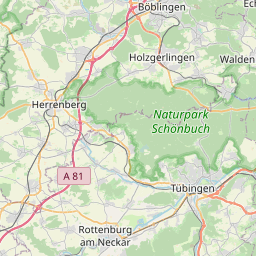






Description: Das Projekt "FP5-EESD, Droplet-wall-interaction phenomena of relevance to direct injection gasoline engines" wird/wurde gefördert durch: Kommission der Europäischen Gemeinschaften Brüssel. Es wird/wurde ausgeführt durch: Robert Bosch GmbH.Objective: Direct Injection Spark Ignited (DISI) engines are superior to other SI engines in terms of fuel efficiency and CO2 emissions. The topic of DISI engine hydrocarbon requires a new consideration of the problem of droplet wall interaction. Wall films and pools of unburnt fuel formed by spray or droplet wall impingement is a major source of hydrocarbon emissions. To allow the effective design of DISI engines with respect to mixture formation, CFD tools are indispensable. These CFD codes commonly make use of Eulerian-Lagrangian methods for spray simulation and require appropriate droplet wall interaction models. It is the goal of this project to derive a general droplet wall interaction model applicable to the entire range of conditions present during operation of DISI engines. Description of the Work: Eulerian-Lagrangian methods track individual droplets along their trajectory until the droplets either evaporate, leave the simulation domain or impinge on a wall boundary. In the latter case correlations are required that link the pre and post-impingement conditions of a droplet and secondary droplets respectively. The special conditions in a DISI engine cylinder, i.e. small droplets, high temperatures and a wide range of pressures, do not allow for simple extrapolation of the results of numerous earlier investigations. Since a complete set of information is required for CFD simulations simultaneous measurements of droplet number, size, velocity vector and temperature in the hemisphere above the impact location, plus the resulting wall heat flux, are necessary. The project covers single droplet impacts, droplet chains, monosized sprays and finally polydisperse sprays and considers in particular the relevance of wall temperature and gas phase pressure. This measurement task will be distributed between several project partners according to the appropriateness of their test facilities. With the correlations evolving from these measurements a general droplet wall interaction model for single droplet impact is derived and then extended to encompass high droplet impact frequencies and number densities. Finally the developed interaction model is tested on real polydisperse spray applications under DISI conditions and validated with experimental measurements on injections into a constant volume chamber or optical DISI engine. Expected Results and Exploitation Plans: Besides a significant increase in understanding of the physical processes present in droplet wall impingement, a broad and consistent data base is collected. With this data a general statistical model of droplet wall interactions for single and multiple droplet wall interaction can be constructed, accounting for all major influencing parameters. The development of theoretical models will also be supported by this information. DWDIE results enhance the capability and precision of CFD codes to serve as design tools in the development of efficient and clean DISI engines.
SupportProgram
Origins: /Bund/UBA/UFORDAT
Tags: Benzin ? Brennstoff ? CO2-Emission ? Kfz-Abgas ? Kraftstoffeffizienz ? Kohlenwasserstoff ? Kombinationswirkung ? Ottomotor ? Rückstandsanalyse ? Temperaturverteilung ? Korrelationsanalyse ? Emissionsquelle ? Emissionsüberwachung ? Kohlendioxid ? Abgasreduzierung ? Messprogramm ? Messtechnik ? Schadstoffemission ? Verbrennungsmotor ? Gasförmiger Stoff ? Flächenquelle ? Hochrechnung ? Messdaten ? Daten ? Physikalisches Modell ? Simulation ? Simulationsmodell ? Statistische Analyse ? Strömungsmodell ? Emissionsminderung ? Mathematische Methode ? Produktdesign ? Rückstand ? Datenbank ? Datenerhebung ? Versuchsanlage ? Physikalische Größe ? Physikalischer Vorgang ? Effizienzsteigerung ? Eignungsfeststellung ? Vergaser ? Wärmefluss ? Auswertungsverfahren ?
Region: Baden-Württemberg
Bounding boxes: 9° .. 9° x 48.5° .. 48.5°
License: cc-by-nc-nd/4.0
Language: Englisch/English
Time ranges: 2000-11-01 - 2003-10-31
Accessed 1 times.